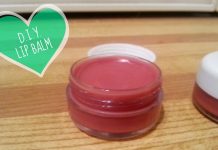
Clays have been used in beauty care and in treating ailments for centuries. We have heard about the Dead Sea Clay, which is extremely rich in minerals and has powerful healing properties. Fuller’s Earth, or Multani Mitti, which is a natural clay, is used extensively in beauty care, even in home-made packs. It is mentioned in Ayurvedic texts and is said to balance all three “doshas.”
Why Clay Packs?
Clay is said to be beneficial for the skin and scalp due to its great capacity to absorb and also has healing properties. It is said to reduce oiliness and absorbs sebum the skin’s natural oil. This helps to prevent and control eruptions and acne conditions. Clays can also absorb toxins and impurities and thus detoxify the skin. In fact, they can be very relevant dealing with high levels of pollution in cities. Some clays have a cooling effect, while many are rich in minerals. Clays cleanse and refine the skin and also tone and tighten the skin, performing the functions of an ideal face mask. Another benefit is the nourishing effect of clays, as they contain several minerals. Some of them are, in fact, very rich in minerals.
Different Clays used in Skin Care
Applying packs is an integral part of skin care, as it is an ideal way of preserving the good health and youthful qualities of the skin. Fuller’s Earth (Multani Mitti) and Kaolin are most commonly used. Clays have a drying effect, so moisturizing ingredients like honey, aloe vera, fruit pulp, etc., may be added to mud-packs, especially if the skin is normal to dry. Clay does come in different colours, according to the quantity of the presence of different minerals.
Kaolin – White & Yellow
White clay contains Kaolin. It is most commonly used. It is mild and gentle in nature and also suits sensitive skin. It is not as absorbent as the other clays, but can be used for most skin types, including normal to dry skin. It softens the skin and has antiseptic properties too. Yellow clay contains yellow Kaolin. It has more absorbing ability than white clay and may not be suitable for dry or mature skin. However, it is suitable for normal skin, combination skin and normal to oily skin. It is said to oxygenate the skin and also helps to tone and tighten the skin.
Moroccan Rhassoul
It is said to suit all skin types. It is rich in magnesium and also contains Kaolin. It helps to cleanse the skin, softening and removing dead skin cells, improving skin elasticity and keeping the skin healthy and youthful.
Fuller’s Earth
Fuller’s Earth, or multani mitti, is easily available. It is white or light beige in colour and contains several minerals. It is of particular benefit to oily skins, as it absorbs and reduces oiliness from the skin surface. It also refines the pores and tightens the skin. In fact, it helps acne and pimple prone skin and can be used along with sandalwood, neem, mint, etc. It becomes dry when applied on the skin, tightening the skin and serving the purpose of a useful face pack.
Bentonite
Bentonite is popular. It is composed of volcanic ash and is of a light brown colour. It has high absorbing ability and the ability to draw out toxins. In fact, it is said to contain the ability to draw out heavy metals. It is best suited to oily and congested skin. Bentonite Clay is said to have the unique benefit of drawing out even heavy metals, like lead, mercury, etc., which may be present in some cosmetics and even in some processed foods. It is said to have the ability to absorb liquids and swell up, thus absorbing toxins from the liquid. Bentonite is very rich in minerals like calcium, magnesium, silica, sodium, copper, iron and potassium. Therefore, it is more powerful in terms of removing toxins and purifying the skin. It is also more suited to oily skin.
Different Colours of Clay
Pink Clay is a mixture of red and white clays. It is said to be one of the mildest of clays used in skin care, with a gentle action. It helps to soften dead skin cells and cleanse the skin, leaving it smooth and glowing. It has a unique refreshing effect. Due to its mild nature it is used for sensitive and mature skins. It is used in the formulation of several skin care cosmetics.
Green Clay is obtained from France. It is a marine clay, containing seaweeds, as well as minerals. It contains zinc, which has healing properties and is particularly suited to oily, congested and acne-prone skin.
Activated Charcoal
One of the latest ingredients in beauty treatments is activated charcoal. Many wonder what it is and how can something associated with “coal” be used for beauty? Activated charcoal is carbon that has been treated with oxygen, resulting in a fine black powder. It is valued due to its ability to absorb toxins and chemicals. Get food-grade activated charcoal for beauty treatments. It is a natural ingredient and helps to purify the skin, drawing out toxins and adding radiance. It also helps oily skins and unclogs the pores. The pores shrink, making the skin look smooth and radiant.
Home Remedies for Skin Care with Clay
For oily skin: Mix Fuller’s Earth (multani mitti) with rose water into a paste and apply on the face, avoiding the lips and area around eyes. Wash it off when it is dry.
For acne-prone skin: Mix Fuller’s Earth with sandalwood paste, rose water and neem leaf powder into a paste. Apply the same way and wash off when dry.
For acne marks: Mix Fuller’s Earth with one teaspoon lemon juice and rose water into a paste. Apply on the face. Wash it off when it is dry.
For normal to dry and normal to oily skin, mix 1 teaspoon Kaolin with aloe vera gel into a paste. Apply on the face, avoiding the lips and area around eyes. Wash it off after 15 minutes with plain water. If there is acne, add 2 drops of Tea Tree Oil to the mixture.
For normal to dry skin, 2 teaspoons of Kaolin powder may be mixed with one teaspoon each of honey and yogurt into a paste. Apply and remove the same way.
Mix 2 teaspoons Kaolin powder, with 2 teaspoons rose water, half teaspoon pure glycerine and a pinch of turmeric. Apply on oily, pimple prone skin and wash off when it dries, or after 15 minutes.
Mix activated charcoal with aloe vera gel and rose water and apply a thin layer on the face, avoiding the lips and area around eyes. Wash it off after 20 minutes.
For acne prone skin, add 3 to 4 DROPS of Tea Tree Oil and rose water to activated charcoal, for a face mask. Wash it off after 20 minutes.
For oily skin, mix Fuller’s Earth and activated charcoal powder with green tea. Soak a green tea-bag in hot water. When it cools, add it to the other ingredients. Wash off after 15 minutes. It adds a healthy, radiance.
To discourage blackheads and reduce oiliness, mix one teaspoon each of Fuller’s Earth, baking soda and active charcoal. Add rose water or mineral water to make a paste. Apply on the face, avoiding the lips and area around eyes. Wash it off after 15 minutes.
To discourage blackheads and reduce oiliness, mix one teaspoon each of Fuller’s Earth, baking soda and active charcoal. Add rose water or mineral water to make a paste. Apply on the face, avoiding the lips and area around eyes. Wash it off after 15 minutes.
Clay in Hair Care
Clay is also used in hair care, as it removes impurities and reduces oiliness of the scalp. This not only detoxifies the scalp, but also helps in hair problems like dandruff, or fungal infections of the scalp. Clay absorbs oil and draws out toxins, cleansing the pores of the scalp. It also helps to soften the hair. Clays can be used in hair packs, while clay shampoos are also available. For instance, the clay may be mixed with apple cider vinegar or even water. If there is dandruff, add a few drops of rosemary essential oil or tea tree oil. It should be a paste. Part the hair in sections and massage the scalp with this paste. Apply the paste on the hair and leave it on for 10 to 15 minutes. It should not become dry. Rinse the hair thoroughly with water.
Conclusion
It is important to know your skin and hair type and to know how to select the clay that will suit you best. You should know how often to use the mask. This depends on the season too, apart from skin type. Using a ready-to-use pack may be more convenient, as you can get information on the label. On the other hand, you can mix a pack at home, but keep your skin type in mind and add ingredients accordingly.




































